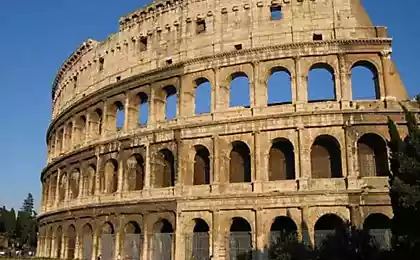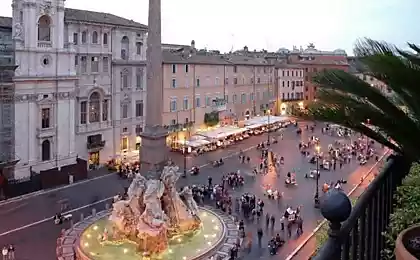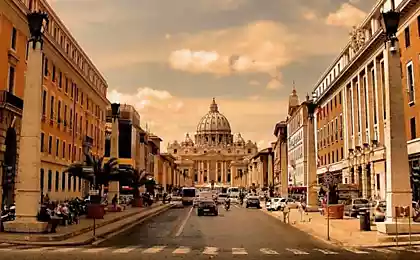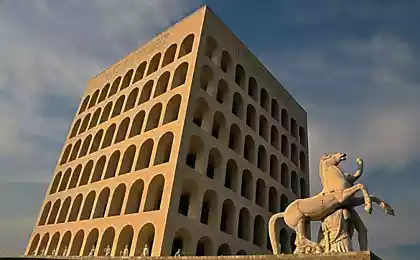652
Colosseum. Amfiteatr Flavian
In ancient Rome preserved many historical monuments, but the most unusual of them is the Colosseum, which was doomed to death people desperately fought and died for the entertainment of the free citizens of Rome. It became the largest and most famous of all Roman amphitheaters, and one of the greatest engineering masterpieces of Roman art and architecture extant.

The construction of the largest ancient amphitheatre was commissioned by Emperor Vespasian in 72 ad, the Colosseum Name in translation into Russian means "colossal", the building has received, not because of their size, but because of the giant statue of Nero that is installed at the entrance; monument of gilded bronze was depicted as a tyrant in the form of the sun God.
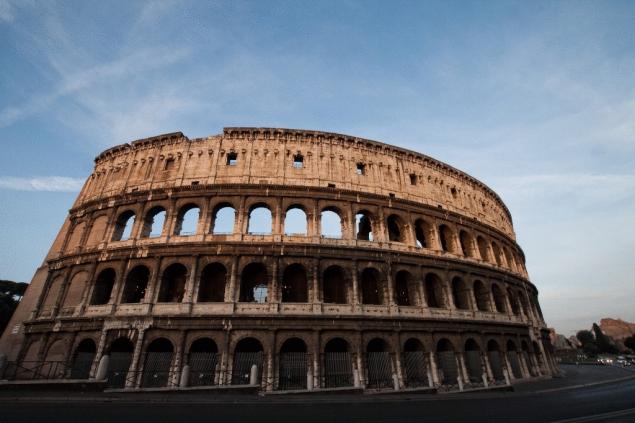
Unlike most other amphitheatres, located on the outskirts of the city, the Colosseum was built in Rome. He was the product of uncontrollable extravagance of the Roman Emperor Vespasian (69-79 years), decided to strengthen its position the construction of the amphitheater due to the huge production, resulting in the uprising of the Jews.

The Grand Coliseum was amazed anyone fell for the first time in the capital of the Empire. Four floors of the building could accommodate 80 thousand people. The columns of the upper tier is attached to a giant canopy that protected spectators from the sun. Inside the building the Colosseum was made of marble and the facade is in travertine (a porous rock, widely used in ancient times as a building material) plate which is fastened in iron shackles.
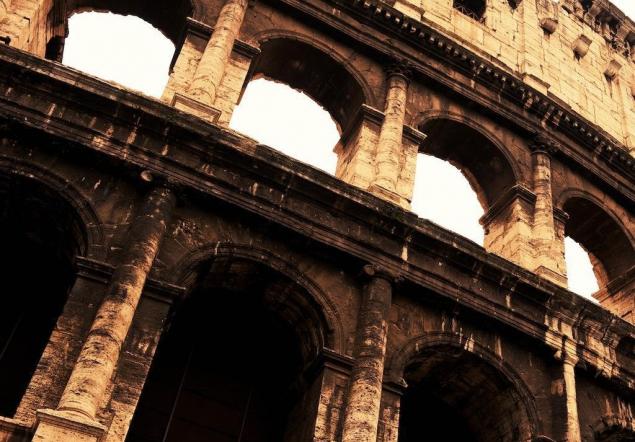
Invented in the Roman Empire the amphitheatre was a place of spectacular battles, the most popular of which were the venationes (animal hunts) and the munera (gladiatorial games). In the first years after the opening of the Colosseum, a huge popular naumachia (sea battles). The Roman ruling class was obliged by the prevailing concepts to organize spectacles, in order to earn the respect and favor of the common citizens of the Empire and to preserve the public peace. Visit the amphitheatre were entitled to all free citizens of Rome.
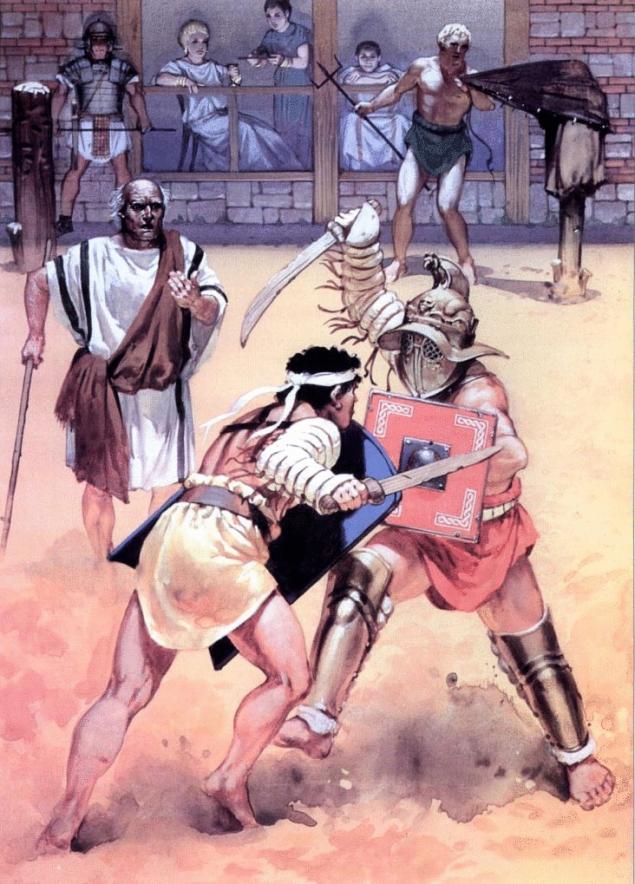
In the middle of the fourteenth century an earthquake destroyed the Western wall of the Colosseum. Afterwards amphitheatre a few centuries became a "field" of stone for the construction of many Roman buildings, including a number of bridges, the Venetian Palace, the Cathedral of SV. Peter. Hauling stone, threatening to completely destroy an ancient monument, stopped only in the middle of the eighteenth century, Pope Benedict XIV, who at the building of the cross and consecrated it as the place of martyrdom of many Christians.

However, much later, when the Colosseum had not been the scene of bloody fighting, nor cruel executions, a Grand building continues to be admired as residents and foreigners. In one of the medieval pilgrim hymns, we read: "What will be the Colosseum, as idle and Rome. If the Colosseum falls Rome will fall with it. If you die Rome will disappear and the whole world."
Source: /users/155

The construction of the largest ancient amphitheatre was commissioned by Emperor Vespasian in 72 ad, the Colosseum Name in translation into Russian means "colossal", the building has received, not because of their size, but because of the giant statue of Nero that is installed at the entrance; monument of gilded bronze was depicted as a tyrant in the form of the sun God.

Unlike most other amphitheatres, located on the outskirts of the city, the Colosseum was built in Rome. He was the product of uncontrollable extravagance of the Roman Emperor Vespasian (69-79 years), decided to strengthen its position the construction of the amphitheater due to the huge production, resulting in the uprising of the Jews.

The Grand Coliseum was amazed anyone fell for the first time in the capital of the Empire. Four floors of the building could accommodate 80 thousand people. The columns of the upper tier is attached to a giant canopy that protected spectators from the sun. Inside the building the Colosseum was made of marble and the facade is in travertine (a porous rock, widely used in ancient times as a building material) plate which is fastened in iron shackles.

Invented in the Roman Empire the amphitheatre was a place of spectacular battles, the most popular of which were the venationes (animal hunts) and the munera (gladiatorial games). In the first years after the opening of the Colosseum, a huge popular naumachia (sea battles). The Roman ruling class was obliged by the prevailing concepts to organize spectacles, in order to earn the respect and favor of the common citizens of the Empire and to preserve the public peace. Visit the amphitheatre were entitled to all free citizens of Rome.

In the middle of the fourteenth century an earthquake destroyed the Western wall of the Colosseum. Afterwards amphitheatre a few centuries became a "field" of stone for the construction of many Roman buildings, including a number of bridges, the Venetian Palace, the Cathedral of SV. Peter. Hauling stone, threatening to completely destroy an ancient monument, stopped only in the middle of the eighteenth century, Pope Benedict XIV, who at the building of the cross and consecrated it as the place of martyrdom of many Christians.

However, much later, when the Colosseum had not been the scene of bloody fighting, nor cruel executions, a Grand building continues to be admired as residents and foreigners. In one of the medieval pilgrim hymns, we read: "What will be the Colosseum, as idle and Rome. If the Colosseum falls Rome will fall with it. If you die Rome will disappear and the whole world."
Source: /users/155


